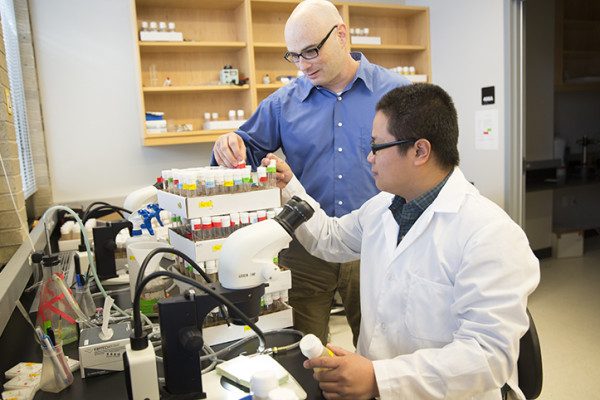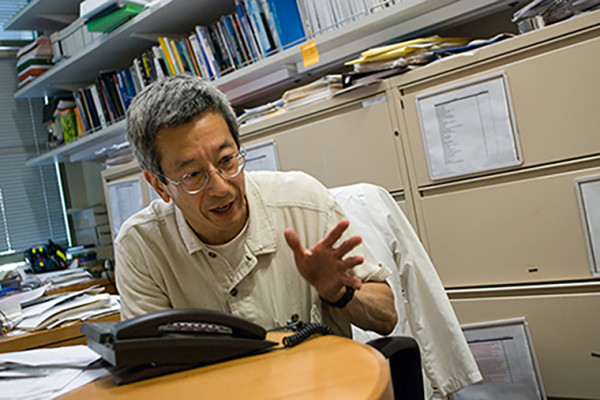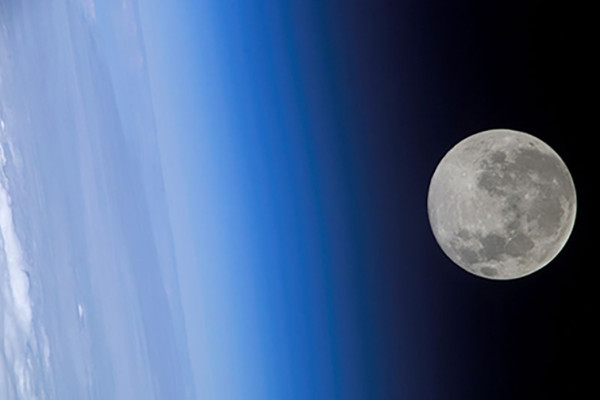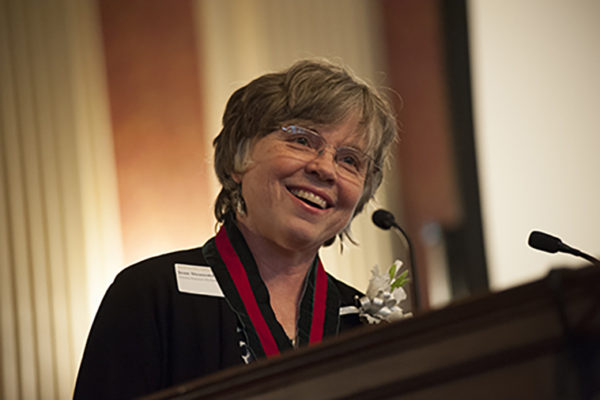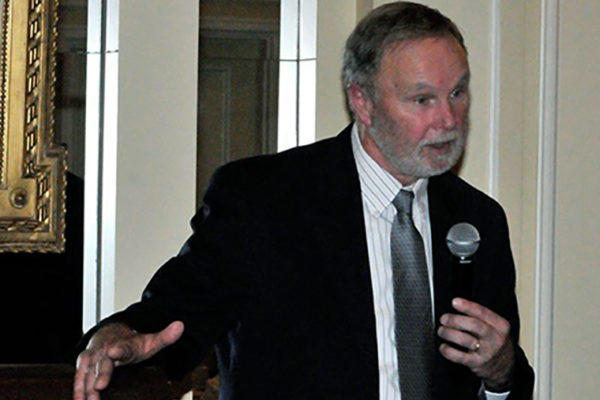Scientists find a molecular clue to the complex mystery of auxin signaling in plants
Plants fine-tune the response of their cells to the potent plant hormone auxin by means of large families of proteins that either step on the gas or put on the brake in auxin’s presence. Scientists at Washington University have learned that one of these proteins, a transcription factor, has an interaction region that, like a button magnet, has a positive and negative face. Because of this domain, the protein can bind two other proteins or even chains of proteins arranged back-to-front.
A novel mechanism for fast regulation of gene expression
Yehuda Ben-Shahar and his team at Washington University in St. Louis have discovered that some mRNAs have a side job unrelated to making the protein they encode. They act as regulatory molecules as well, preventing other genes from making protein by marking their mRNA molecules for destruction.
2014 Leopold Marcus lecture by Nobel laureate
Roger Tsien, one of three chemists who won the Nobel Prize in Chemistry
in 2008 for the discovery and development of green fluorescent protein, will give the Leopold Marcus lecture at Washington University in
St. Louis. His talk, “Fluorescent Molecules for Fun and Profit,” is intended for a general audience and will take place at 4 p.m. Wednesday, March 12, in the Laboratory Sciences Building, Room 300. The talk is free and open to the public.
Earth and moon’s origins are topic of 2014 McDonnell Distinguished Lecture
The McDonnell Distinguished Lecture this year will describe current understanding of the formation of the solar system, particularly its mix of rocky planets, gas giants and icy planets. The part of the story we have not nailed down, says speaker Alex N. Halliday, PhD, of Oxford University, is the origin of Earth’s moon. The lecture, which takes place at 7 p.m. Wednesday, March 5, in Whitaker Hall, Room 100, is free and open to the public.
Students win international University Physics Competition
A WUSTL team learned last month that they had won the Gold Medal for their analysis of a problem during the international University Physics Competition, held in November. Using the principles of physics, they predicted characteristics of an animal on an extraterrestrial planet.
Putting the squeeze on rocks
WUSTL geologist Philip Skemer has built a custom-made rock-formation appartus that traps a rock sample between tungsten carbide anvils about a
quarter inch in diameter within a 100-ton hydraulic press and then twists the sample slowly from below. His target pressure is six giga-pascals, the pressure 250 kilometers down, to
the base of the tectonic plates. He will use the apparatus to determine through experiment the mechanisms that lead mantle rocks to flow, dragging the tectonic plates with them.
Skemer will use NSF CAREER award to understand rock flow in Earth’s mantle
Philip Skemer, PhD, assistant professor in the department of earth and planetary science in Arts & Sciences at Washington University in St. Louis, has won a prestigious Faculty Early Career Development Award (CAREER award) from the National Science Foundation. He will use the award for a series of experiments in which rock samples will be deformed at the extreme temperatures and pressures they encounter along the boundaries where plates collide.
Strassmann installed as Charles Rebstock Professor of Biology
Biologist Joan E. Strassmann, PhD, was installed Jan. 23 as the Charles Rebstock Professor of Biology in Arts & Sciences in a ceremony in Holmes Lounge. Following the formal installation, Strassmann gave an entertaining talk about a high-stakes gamble she and Queller made 15 years ago: to switch from studying cooperation and conflict in social insects, famous for their complex societal arrangements, to studying it in an amoeba, whose claim to fame had been its simple lifestyle.
Happy 10th anniversary Opportunity!
Ten years ago, on Jan. 24, 2004, the Opportunity rover landed on a flat plain in the southern highlands of the planet Mars and rolled into an impact crater scientists didn’t even know existed. In honor of the rover’s 10th anniversary, Ray Arvidson, PhD, deputy principal investigator of the rover mission, recently took an audience on a whirlwind tour of the rover’s decade-long adventures and discoveries.
Microbes buy low and sell high
Microbes set up their own markets, comparing bids for commodities, hoarding to obtain a better price, and generally behaving in ways more commonly associated with Wall Street than the microscopic world. This has led an international team of scientists, including two from Washington University in St. Louis, to ask which, if any, market features are specific to cognitive agents.
View More Stories

